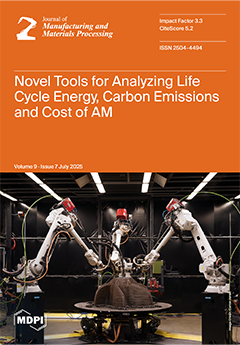Open AccessArticle
Non-Isothermal Process of Liquid Transfer Molding: Transient 3D Simulations of Fluid Flow Through a Porous Preform Including a Sink Term
by
João V. N. Sousa, João M. P. Q. Delgado, Ricardo S. Gomez, Hortência L. F. Magalhães, Felipe S. Lima, Glauco R. F. Brito, Railson M. N. Alves, Fernando F. Vieira, Márcia R. Luiz, Ivonete B. Santos, Stephane K. B. M. Silva and Antonio G. B. Lima
Viewed by 1003
Abstract
Resin Transfer Molding (RTM) is a widely used composite manufacturing process where liquid resin is injected into a closed mold filled with a fibrous preform. By applying this process, large pieces with complex shapes can be produced on an industrial scale, presenting excellent
[...] Read more.
Resin Transfer Molding (RTM) is a widely used composite manufacturing process where liquid resin is injected into a closed mold filled with a fibrous preform. By applying this process, large pieces with complex shapes can be produced on an industrial scale, presenting excellent properties and quality. A true physical phenomenon occurring in the RTM process, especially when using vegetable fibers, is related to the absorption of resin by the fiber during the infiltration process. The real effect is related to the slowdown in the advance of the fluid flow front, increasing the mold filling time. This phenomenon is little explored in the literature, especially for non-isothermal conditions. In this sense, this paper does a numerical study of the liquid injection process in a closed and heated mold. The proposed mathematical modeling considers the radial, three-dimensional, and transient flow, variable injection pressure, and fluid viscosity, including the effect of liquid fluid absorption by the reinforcement (fiber). Simulations were carried out using Computational Fluid Dynamic tools. The numerical results of the filling time were compared with experimental results, and a good approximation was obtained. Further, the pressure, temperature, velocity, and volumetric fraction fields, as well as the transient history of the fluid front position and injection fluid volumetric flow rate, are presented and analyzed.
Full article
►▼
Show Figures





